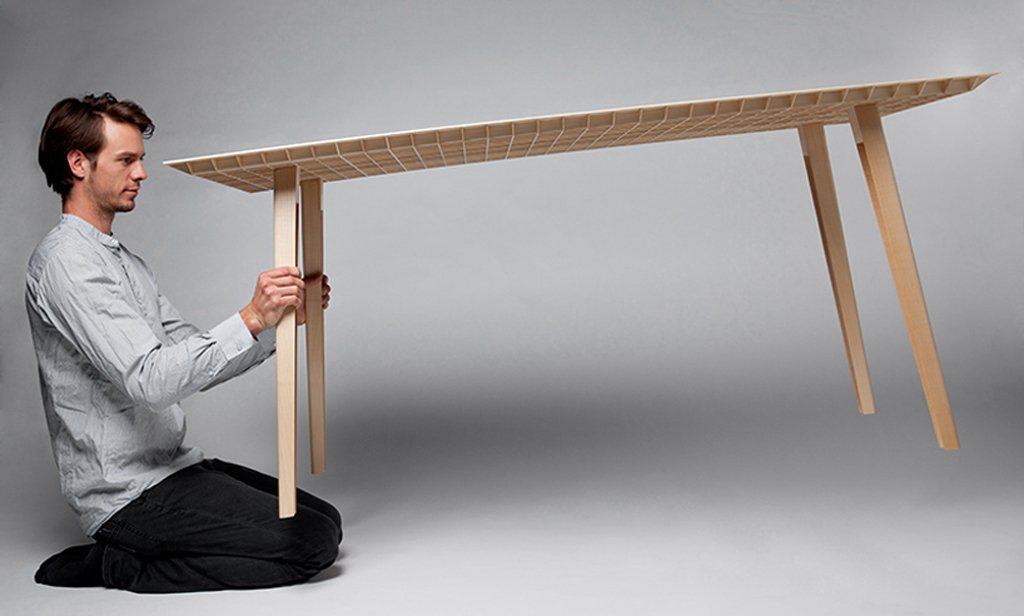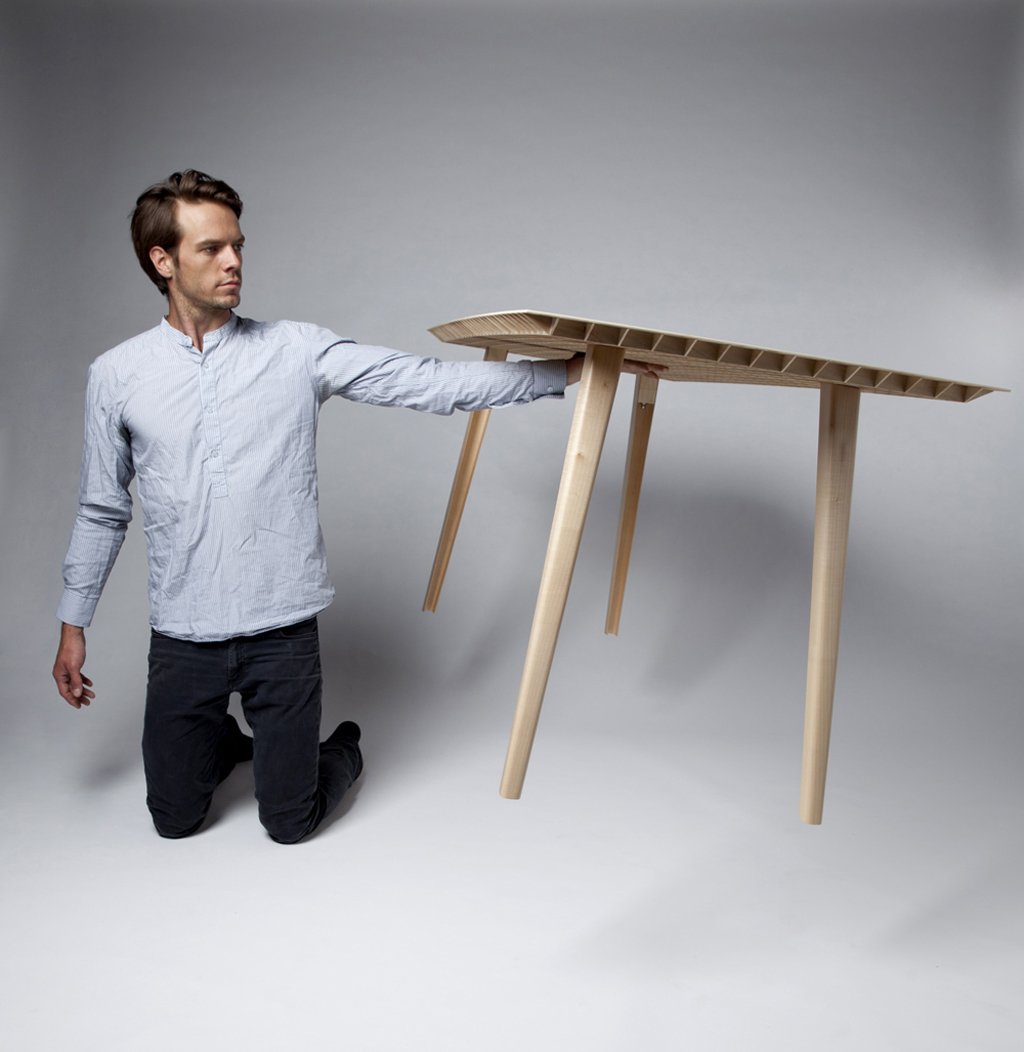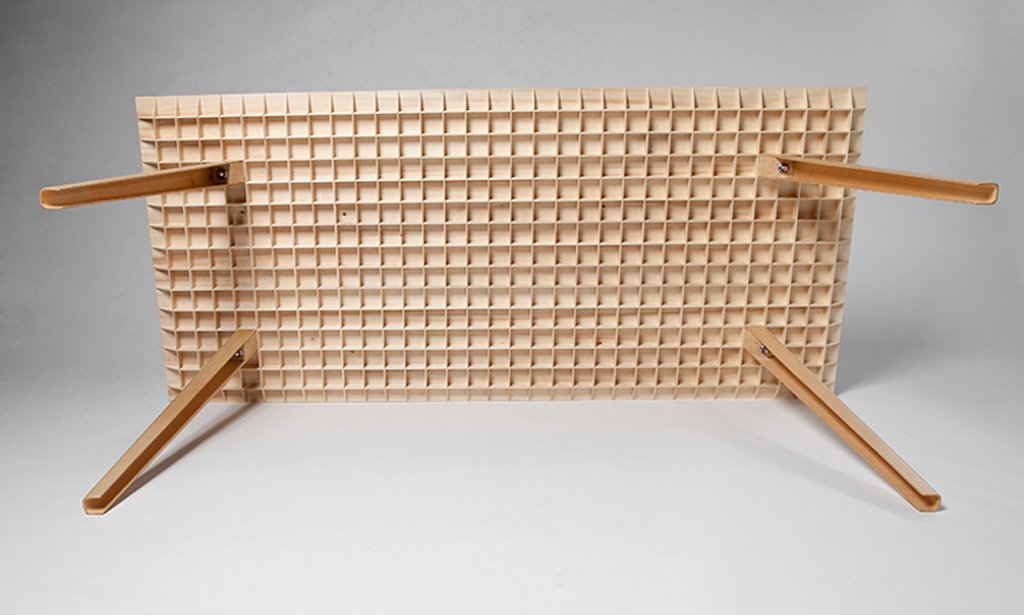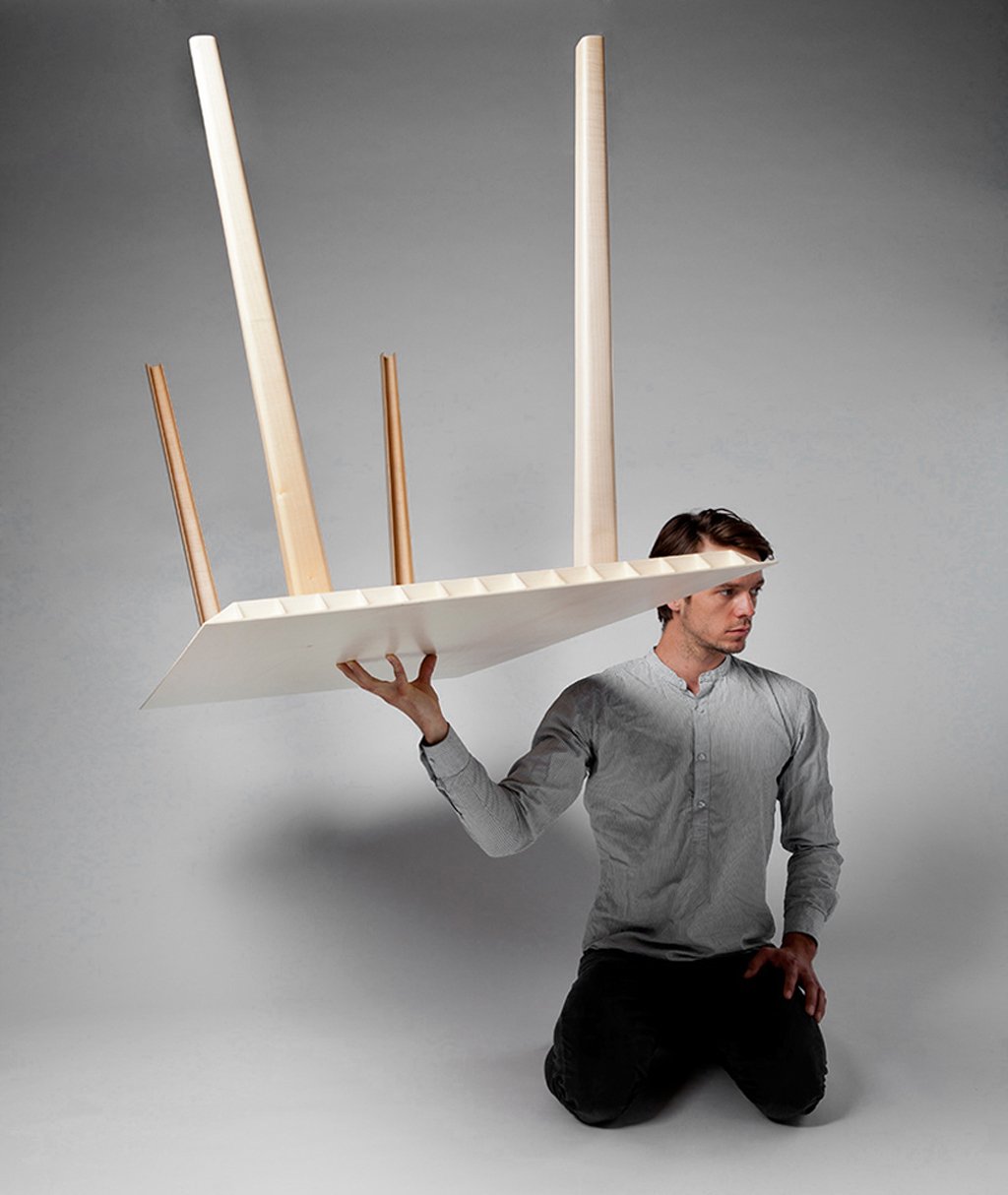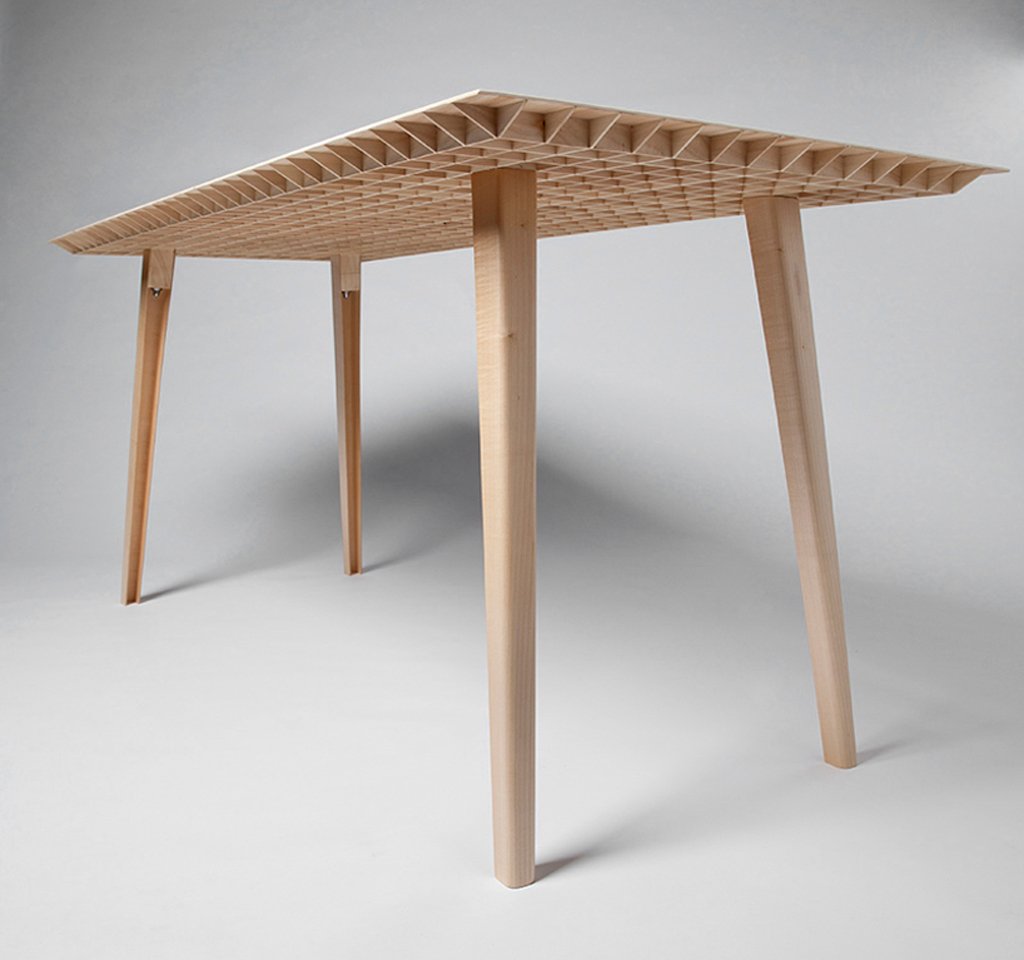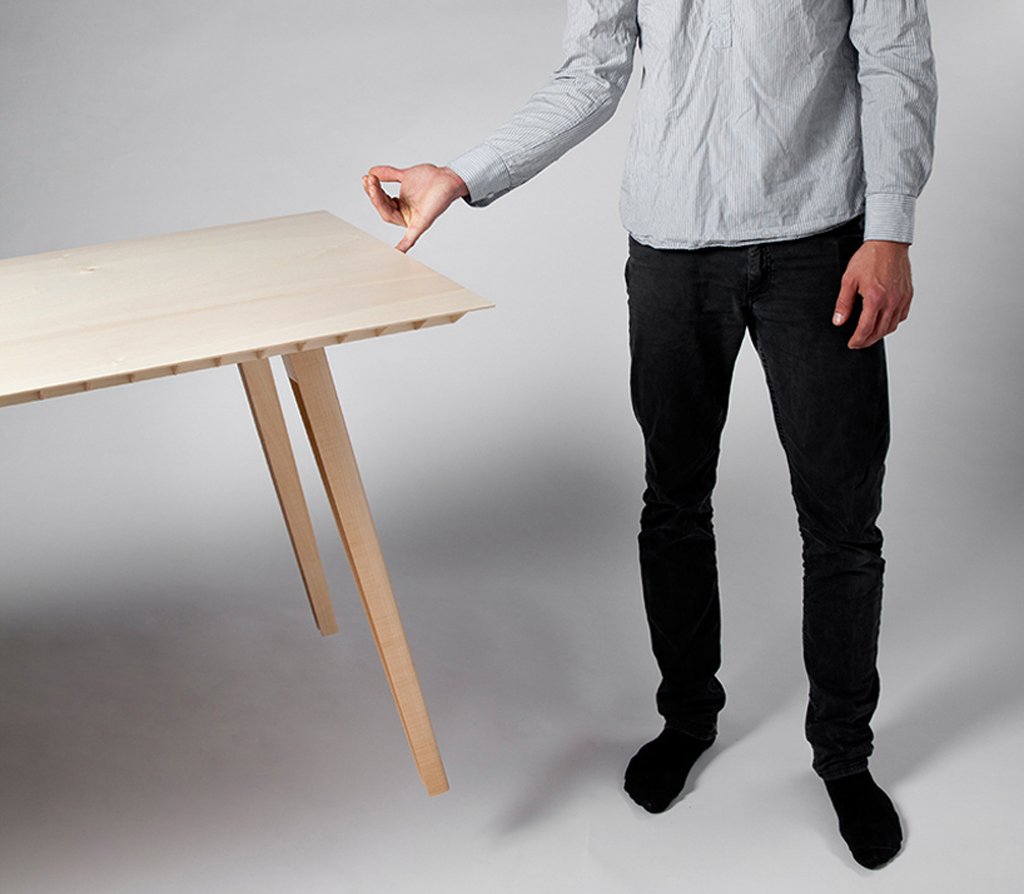Weighing in at just 4.6 kilograms (or 10.1 lbs), the Kleinergleich5 is the world’s lightest wooden table. Designed by Ruben Beckers, the Kleinergleich5 succeeds Benjamin Hubert’s Ripple, the 9-kilogram table of 2013. Becker’s table weighs so little because its layered strips of wood are closer in form to pieces of paper than planks of timber. The table stands with the support of a grid on its underside, which distributes weight and locks the legs into place. More than an engineering experiment, the Kleinergleich5 appeals to the eye with its symmetry and its light, natural wood.
But is it practical? The Kleinergleich5 is a standout in its weight class, yet the concept of lightweight tables is possibly more fun than functional. A table such as this is easier to move than a regular model, but there are many situations in which one doesn’t want a table to move. A lightweight table might be fine pushed against a wall or stationed in a room that doesn’t see much activity, but it’s hardly suitable as a freestanding living room table, where a child, a dog, or someone who just hasn’t drunk their coffee yet is bound to bump into it and send whatever’s on top crashing to the floor. While handy if one lives in a building without an elevator, a lightweight table isn’t as versatile as a traditional, sturdier model, The informal competition to design the lightest wooden table should continue, but let’s keep the designs’ real-world applications in perspective.



